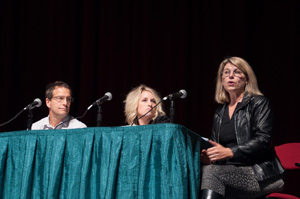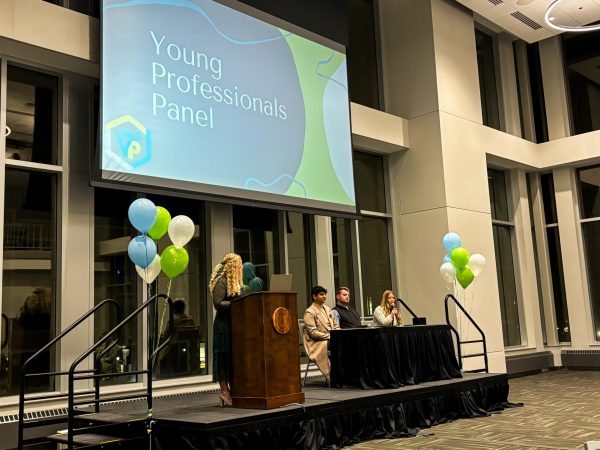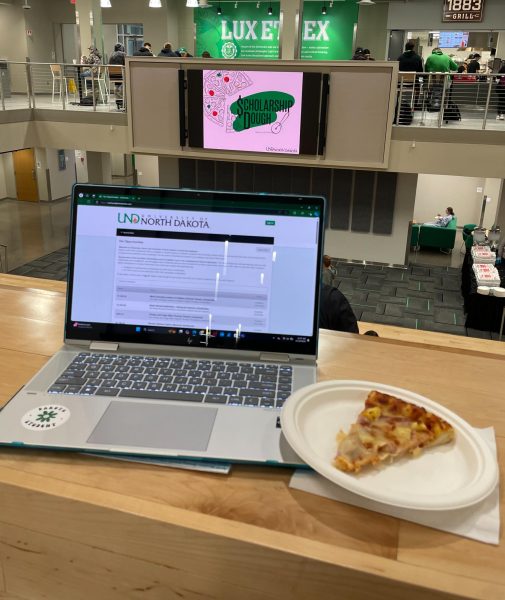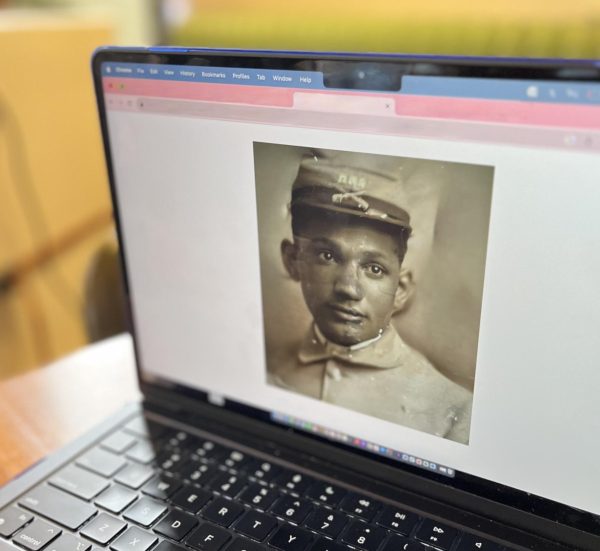The human being: body and mind
Humans have pondered the concept of human consciousness for centuries, more so in the last century.
Last Thursday, a panel of experts discussed their opinions on human consciousness. Among them were UND and Altru Hospital Psychiatrist Dr. Ellen Feldman, Associate Professor of Psychology Dmitri Poltavski, Professor of Psychology F. Richard Ferraro, Professor of Teaching & Learning Mark Guy, Professor of English Eric Wolfe and Professor of Philosophy Donald Poochigian as the moderator.
The discussion involved questions like “What are your views on consciousness?” and “How would you approach consciousness?”
Poochigan started the discussion by stating that consciousness is the primary subject of humanities and secondary subject of the social sciences.
“Every man has his own perception of the world that he cannot so easily set aside. Everything that we have talked about that has ever existed says we have consciousness. It is my hope that this panel will initiate an integration of their differing views on consciousness,” Poochigan said.
Feldman said the psychiatry community would say that we are all interconnected within ourselves, with mind and body both working with each other.
“There are certain neuro-chemicals in the brain that impact feeling and emotion,” she said. “These neurochemicals have an impact on emotions and how the rest of our body reacts.”
Feldman recalled a few examples of patients who showed severe physical symptoms but had no medical explanation for the cause. This proves that our mind is powerful enough to change things in our body without any physical explanation, she said.
Wolfe had his own opinion on what consciousness is.
“I see consciousness as self-consciousness, an ‘I’ that is able to reflect on its own consciousness,” Wolfe said.
He also took a psychoanalyst’s view and discussed the Freudian slip, which is a verbal or memory mistake that is believed to be linked to the unconscious mind. These slips supposedly reveal secret thoughts and feelings that people are not consciously aware of.
When asked what does it mean to be conscious, Poltavski turned to logical definitions of consciousness.
“Consciousness is the state of being aware of one’s surroundings or existence,” Poltavski said. “We live out our conscious life in the first person, within the boundary of our own body. What we think to be consciousness cannot take place without the appropriate portions of our brain, primarily the frontal cortex.”
He said our frontal cortex is what separates humans from other animals.
“It gives us the ability to be aware of our consciousness and existence,” he said. “Many species have highly developed senses that are superior to the same senses in humans. But humans have a greater expanses of cortex called the association cortex, which is important for all of the attributes of consciousness to happen.”
Poltavski talked about mirror neurons, special neurons in the brain that when activated can affect us physically. An example of this is when husbands go to their wife’s pregnancy classes and start to feel some symptoms of pregnancy, even though there is no medical explanation for the symptoms.
Ferraro took a cognitive psychologist viewpoint and mentioned the bias commonly found from the implicit association test, of which we are not consciously aware.
He also mentioned Phineas Gage, a man who survived serious brain damage when a steel rod was driven through his skull.
“Massive parts of his brain were gone but he was still conscious even though his personality changed and his frontal lobe was severely damaged,” Ferraro said.
He discussed memory quite a bit, saying there must be a link between unconscious and consciousness because of memory storage.
Most people experience infantile amnesia, where their earliest memory that they remember is between the ages of three and four years old, many people do not remember previous to that time. However, Ferraro said it is still there, but most of our memories are hidden from our conscious minds.
“You can’t get to it because you didn’t pay enough attention or didn’t code it right,” Ferraro said.
Guy put his discussion in the perspective of learning. He said neuroscience tells us that a community is built on balance and perspective and consciousness has to do with what perspective one sees.
“Teachers are trying to get students to see their answer,” Guy said. “Students should be able to explore first and then decide on answers, and teachers should let them do so…If the stress buttons aren’t pushed, those emotional or stress disturbances do not remain in the brain.”
In closing, Guy said there is a lot to learn from neuroscience and we need to pay more attention to it as educators.
Many more thought provoking topics were discussed among the experts, including how is consciousness related to death, hallucinations and the controversy of pleading insanity in a court of law.
These discussions, dubbed AH! Talks (Arts and Humanities Talks), are held throughout the year and open to all, including faculty, graduate students and undergraduates.
Journey Gontjes is a staff writer for The Dakota Student. She can be reached at [email protected]









